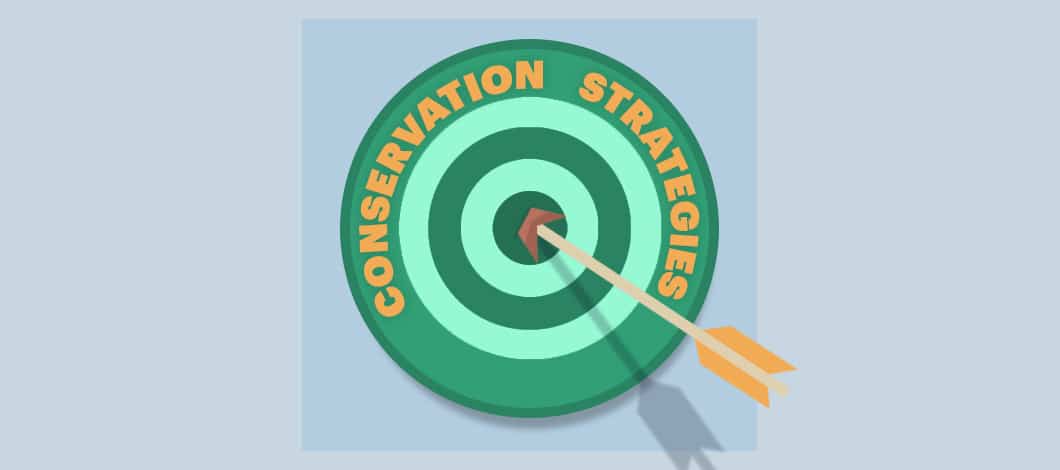Business sustainability strategies can reduce your environmental impact while cutting your costs.
Here are 7 steps to sustainability.
What Is a Business Sustainability Strategy?
A sustainable business is one that minimizes its negative impact on the natural and human environment while promoting a positive impact. This approach to business is called “sustainable” because it avoids depleting resources faster than they can be replaced while avoiding the production of pollutants.
Business sustainability strategies are methods companies use to manage resource usage to avoid leaving a negative environmental impact and promote a positive one. Sustainability in business examples include:
- Increasing reliance on clean energy sources
- Decreasing your carbon footprint
- Reducing paper waste
- Recycling
- Using eco-friendly packaging
- Using energy-efficient light bulbs and appliances
An overall sustainability strategy combines these types of tactics into a comprehensive plan for improving a company’s impact on the environment.
How Do Sustainability Practices Benefit Businesses?
The business benefits of environmental sustainability help companies as well as the environment. In addition to reducing your environmental impact, adopting a sustainability strategy offers multiple advantages:
- Promoting regulatory compliance with current policies
- Preparing you for possible regulatory changes
- Cutting your energy costs
- Building a better reputation for your brand with eco-conscious consumers
- Making your company more attractive for workers who prioritize environmentally friendly employers
The impact of these benefits for businesses is measurable. Consumers are more likely to buy from sustainable brands and more likely to switch to them, with 53% of consumers overall and 57% between ages 18 and 24 switching to lesser-known brands because of sustainability concerns, according to a report by the Capgemini Research Institute, the in-house think tank of global technology consulting firm Capgemini.
The report noted 77% of consumer product and retail organizations which implemented sustainability initiatives saw increases in customer loyalty, and 63% saw gains in brand revenue.

How to Ensure Business Sustainability
You can begin implementing environmental sustainability in business by conducting an audit to identify areas where you could better conserve resources.
Here are 7 steps to help you conduct an effective sustainability audit:
1. Designate a Sustainability Manager
A sustainability manager is a staff member or consultant assigned with the responsibility to oversee the task of setting sustainability goals, developing strategies for achieving them and monitoring performance. Appointing a sustainability manager will enable your organization to coordinate your sustainability efforts and ensure that your results are achieving your objectives.
Depending on your needs and the size of your organization, a sustainability manager can be:
- A member of your staff who takes on this role in addition to their other responsibilities
- A dedicated employee tasked exclusively with overseeing sustainability
- An outside consultant with a degree in sustainability management and specialized skills
While a sustainability manager ideally should have experience with sustainability, this isn’t necessarily a prerequisite. For a smaller business, a good project manager also can fulfill this role if they work with expert advisors.
2. Create a Corporate Sustainability Statement
A strong sustainability strategy needs support from your corporate culture. To begin developing a corporate culture that prioritizes sustainability, start by drafting a formal statement which verbalizes your commitment.
A sustainability statement should sum up several core elements of your company’s policies:
- What your company believes about sustainability
- Why sustainability is important to your company
- What your company does to promote sustainability
How your sustainability policies benefit the environment, your community, your company, your employees and your customers
You can develop a sustainability statement by using online templates or by using other company’s statements as models to build on.
For example, Maryland’s Department of the Environment provides a sample environmental policy statement.
3. Review Your Resource Usage
Guided by your sustainability goals, conduct an audit of your current resource usage to identify areas for improvement. A sustainability audit can include areas such as:
- Electricity usage
- Water usage
- Greenhouse gas output
- Solid waste production
- Chemical waste production
- Recycling volume
For best results, follow an environmental audit checklist to guide your review. The Environmental Protection Agency (EPA) provides a workbook to help small business owners increase energy efficiency which includes some checklists. State agencies also provide resources.
For instance, Minnesota’s pollution control agency provides a green checklist for small businesses. A sustainability manager or environmental consultant can help you develop a customized checklist relevant to your needs.
Use meetings with managers and surveys to gather the information you need for your audit. For example, you might ask each department to provide a report on energy usage, waste production and recycling.
As you review your resource usage, note which areas are having the largest impact on the environment and on your costs. This will help you flag the items which represent your biggest areas for improvement.
Your own internal sustainability audit can be supported by a professional commercial energy audit, which reviews your building to identify where you are losing energy and where you might stand to gain from improvements. Audits can be anywhere from preliminary to comprehensive in scope, with more detailed audits entailing higher costs. Many utility providers offer commercial energy auditing services.
In some cases, you may be able to claim a tax credit for doing an energy audit. For details, see the Department of Energy’s page on energy efficiency tax credits or details provided by your state or local government’s websites.
4. Set Sustainability Goals
After you’ve reviewed your current resource usage, you can select sustainability goals to improve your performance. For best results, select goals which can be measured through key performance indicators (KPIs). For example, international leadership and logistics authority James Tomkins, chief executive of global supply chain provider Tomkins Solutions, suggests some of the most important sustainability KPIs include:
- Percentage of materials which you use from recycled input
- Direct energy consumption per unit of production output
- Energy saved from conservation and efficiency measures
- Percentage of water which your company reuses or recycles
- Total greenhouse gas emissions per unit of weight
Sustainability KPIs will vary by industry. For example, a company that produces and transports physical products will have a different type of environmental impact than one which provides digital services.
Some industries may have special regulatory requirements to consider. Choose KPIs relevant to your business model.

5. Identify Resource Conservation Strategies
Once you’ve set some goals, the next step is to identify strategies you can use to achieve your objectives. Strategies for conserving resources include:
- Improving insulation to cut heating costs
- Improving ventilation to cut cooling costs
- Using smart thermostat systems which automatically adapt to usage needs
- Installing energy-efficient light bulbs
- Installing smart lighting which uses sensors to automatically adjust lighting to activity levels
- Using water-efficient faucets, urinals and toilets
- Monitoring water systems for leaks and maintaining repairs
- Using products rated for efficiency by the EPA’s ENERGY STAR program
- Using cloud computing to reduce on-site energy consumption
- Leasing computers instead of buying new ones
- Promoting employee carpool programs
- Subsidizing employee use of public transportation
- Employing remote workers to reduce on-site energy usage and greenhouse gas emissions
- Reducing paper usage by promoting paperless policies
- Using recycled paper
- Using sustainable printer technology
- Packaging products in recyclable containers
- Providing recycling containers in employee work areas and break rooms
- Choosing logistics providers who follow energy-efficient transportation and packaging practices
Which strategies are applicable to you will vary based on your needs. Select the strategies which best fit your resource usage patterns and conservation goals.
6. Implement Your Business Sustainability Strategy
After you’ve determined which conservation strategies you should use, the next step is to begin deploying them. It may not be practical to implement all the strategies you’ve selected first, so you may find it prudent to prioritize.
To define your priorities, consider which strategies would:
- Have the biggest impact on energy usage?
- Be the least expensive?
- Likely be easiest to implement?
- Be required by law in your industry?
Based on these types of considerations, prioritize and schedule your sustainability upgrades.
Implementing your upgrades may require training your staff to follow new procedures. For example, you may need to train workers on how to follow recycling policies.
7. Track Performance
To ensure that your sustainability strategies achieve your desired goals, set up performance-tracking procedures. Use the KPIs you established when you set your goals to generate periodic reports. Create a schedule for your sustainability manager and team to review performance at regular intervals.
Based on your performance, consider adjustments and improvements. If you find you’re achieving your goals, be sure to share your results with your staff and customers. Consider offering perks as incentives to staff for achieving sustainability benchmarks.
Business Sustainability Strategies: Go Green (and Get Green)
Adopting sustainability strategies helps your business as well as the environment, cutting your costs, improving your brand’s reputation and aiding your recruitment efforts. You can develop a sustainability strategy by conducting an audit of your resource usage and implementing changes based on your findings.
Lay a foundation for an effective sustainability audit by appointing a sustainability manager to coordinate your strategy. Develop a corporate sustainability statement to guide your efforts.
Audit your resource usage to identify areas where you can set goals to improve your conservation of resources through sustainability practices. Forge your business sustainability strategy, track your performance and make adjustments to ensure that your strategy is achieving your goals.
Follow these steps to forge a transition your business to a sustainable model which benefits the environment as well as your brand.










